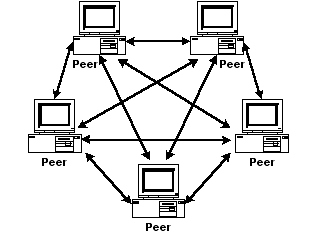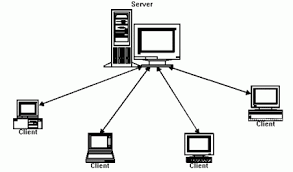Types of Architecture
|
Peer to Peer
|
Client-server
|
Diagram
|

|

|
Definition
|
1) A network model in
which all computers can function as clients or servers as needed,and
there's no centralized control over network resources.
2) Network which all of computers has equal responsibilities, sharing
hardware (such as pprinter),data or information with other computer. |
1) Network in which one or more computers act as a server , and other
computers (clients) on the network request services from the server. |
Advantages
|
- Less startup cost to setup the network architecture- No need for a server.
- Easy to install and configure for the computers in the network
- When a peer fails it will not affect other peers so the netwrok is reliable.
|
- Centralized-Resources and data security are controlled through the server.
- Scalability-Adding or removing resources in the network can be easily done by configuring the server.
- Better management of files-All files are stored in the server.
- Accessibility-Server can be accessed remotely and across multiple platforms including Windows,Linux and Mac OS.
|
Disadvantages
|
- Decentralized-No central repository for files and applications.
- Less security-Does not provide the security available on a client/server network.
- Every user is taking care is his/her own machine
|
- Expese-Required initial investment in dedicated server.
- Maintenance-Large networks will require a staff to ensure efficient operation.
- Dependence-When server goes down,operation will cease across the network.
|



